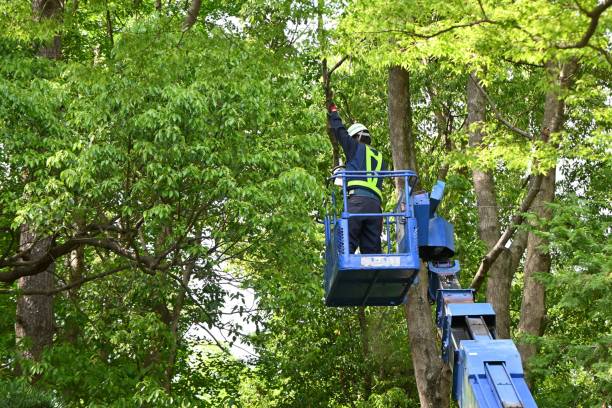Are you wondering who is responsible for removing fallen trees? Well, look no further! Understanding the factors involved will help you navigate this situation with ease, whether on private property or in public spaces and roadways.
When it comes to fallen trees on private property, the responsibility typically falls on the property owner. As the owner, you must ensure the safety of your property and those around it. If a tree falls on your land, it is your responsibility to arrange for its removal.
However, it’s important to note that if the tree falls from a neighboring property, the responsibility might shift to the neighbor, especially if the tree is in poor health or requires maintenance.
By knowing your rights and obligations, you can handle fallen tree removal efficiently and ensure the safety of your property and the people who visit it.
Determining Responsibility for Fallen Trees on Private Property
Who’s responsible for removing fallen trees on private property? In most cases, it’s the responsibility of the property owner to remove fallen trees on their land.
Whether the tree fell due to natural causes, such as a storm, or because of negligence, the burden of removal falls on the owner. Property owners are expected to maintain their land and ensure it’s safe for themselves and others.
If a fallen tree poses a danger or obstructs public access, the owner may also be liable for any damages that occur as a result.
However, there are some exceptions to this general rule. If the tree falls from a neighboring property onto your land, the responsibility for removal may shift to the neighbor. This can occur if the tree is in poor health or if the neighbor is aware of its unstable condition.
In such cases, it’s important to communicate with the neighbor and discuss the issue. It may also be helpful to consult local laws and regulations, as they can vary depending on the jurisdiction.
Ultimately, determining responsibility for fallen tree removal on private property can be a complex matter, but understanding the general guidelines can help you navigate the situation.
Factors to Consider in Public Spaces and Roadways
When maintaining public spaces and roadways, there are various factors you should consider. Firstly, it is important to determine who owns the land where the fallen tree is located. In some cases, the local government or municipality owns and maintains public spaces and roadways. In such instances, the removal of fallen trees typically falls on the government or relevant department. They have the resources and expertise to handle the removal and ensure the public’s safety.
Another factor to consider is the potential danger or obstruction caused by the fallen tree. If the tree is blocking a road or pathway, removing it as quickly as possible becomes a priority to restore access and prevent accidents. Additionally, the fallen tree’s size and complexity should also be considered. Larger trees may require specialized equipment and trained personnel to remove them safely.
The location of the fallen tree is also important. If it poses a risk to nearby structures or utilities, immediate action may be necessary to prevent further damage. Ultimately, when it comes to fallen tree removal in public spaces and roadways, the responsible authorities should prioritize the safety and convenience of the public.

